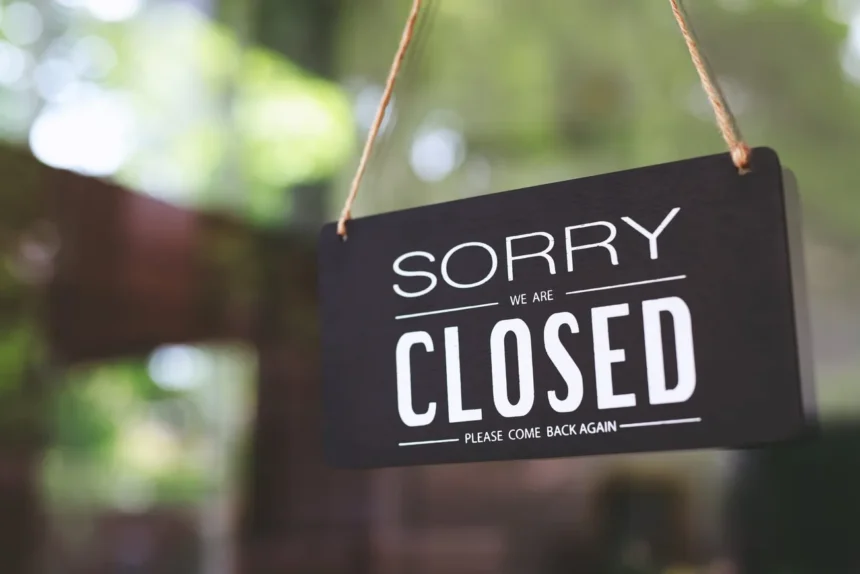The retail landscape has experienced immense changes in recent years, and one development that has garnered significant attention is the phenomenon of stores closing. From large-scale department stores to small, independent shops, closures are impacting communities worldwide. This article explores the reasons behind these shutdowns, their implications, and what the future of retail might look like.
Key Reasons Behind Store Closures
Understanding why stores are closing is critical to identifying trends in retail and consumer behavior. Below are some of the primary factors at play.
1. The Rise of E-Commerce
Online shopping has fundamentally reshaped how people purchase goods. With convenience, variety, and competitive prices, e-commerce has drawn consumers away from traditional brick-and-mortar stores. Major platforms like Amazon and eBay have shown exponential growth, offering almost every product imaginable at the click of a button.
- Key stats: E-commerce retail sales in the U.S. grew by over 14% in 2022, contributing to declines in physical store revenue.
- Example: Companies like Sears and Toys “R” Us struggled to compete with online alternatives, leading to their closures.
2. Shifting Consumer Preferences
Modern consumers prioritize experiences over purchases, spending more on travel, dining, and entertainment rather than tangible goods. Additionally, there is growing interest in sustainable brands and ethically produced items, further reducing demand for fast fashion and large-scale retail.
3. Economic Challenges
Macroeconomic conditions, including inflation and supply chain disruptions, have led to increased costs for retailers. These rising prices are often passed on to consumers, resulting in a decline in discretionary spending. Lower profits have forced many companies to downsize or shutter entirely.
4. High Operational Costs
Operating a physical store comes with high fixed costs, such as rent, utilities, and employee wages. For many retailers, these expenses are no longer justifiable given shrinking foot traffic and lower sales revenue.
- Urban centers have seen an increase in rent, driving many small businesses and chains out of premium locations.
- Example: Gap Inc. has closed several stores across North America due to declining profitability in high-cost areas.
5. Overexpansion
Retailers often fall into a trap of aggressive expansion during profitable times. Unfortunately, when market dynamics shift, oversaturation can become a liability, resulting in closures to consolidate operations.
Case Study:
Popular fashion retailer Forever 21 experienced rapid global expansion, only to declare bankruptcy in 2019. The company closed numerous stores worldwide as part of its restructuring plan.
Industries Hit the Hardest by Store Closures
Some industries have been hit particularly hard by these shifts. Understanding which sectors are most at risk can provide insights into potential future trends.

|
Industry |
Reason for Decline |
Notable Closures |
|---|---|---|
|
Department Stores |
Decline in foot traffic, rise of online alternatives |
Sears, J.C. Penney |
|
Fashion Retail |
Changing fashion cycles, consumer preference for eco-brands |
Forever 21, H&M (select locations) |
|
Electronics |
Competitive online pricing |
RadioShack, Fry’s Electronics |
|
Grocery and Supermarkets |
Shift to online grocery delivery |
Earth Fare, Lucky’s Market |
|
Bookstores |
Rise of eBooks and online platforms |
Borders, Barnes & Noble (some locations) |
The Impact of Store Closures
Store closures are not just a symptom of changing consumer habits; they also have widespread social and economic implications.
1. Loss of Jobs
Store closures often lead to large-scale layoffs, particularly in communities where retail is a significant employer. For example, when Macy’s closed 125 stores in early 2020, thousands of employees were left without jobs.
2. Decline of Local Communities
Brick-and-mortar stores serve as more than just shopping destinations. They are integral parts of local communities, providing spaces for people to connect. Vacant storefronts can lead to a sense of economic decline in neighborhoods.
3. Real Estate Challenges
When businesses close, commercial spaces often remain empty for months or years. This reduces the value of retail property and impacts landlords, particularly during times of economic downturn.
How Some Retailers Are Adapting
Despite these challenges, not all retailers are shuttering their doors. Many are finding creative ways to adapt and thrive in this evolving marketplace.
1. Investing in Omnichannel Retail
Retailers are investing heavily in creating seamless shopping experiences that integrate online and in-store purchases. For instance:
- Buy-online-pickup-in-store (BOPIS) options have become a popular choice for major brands like Walmart and Target.
2. Upscaling Customer Experiences
Experience-focused stores are becoming more common. Retailers are designing stores to be more engaging and immersive, making shopping a memorable activity rather than a transactional one.
3. Smaller Footprint Stores
To reduce operational costs, companies are opening smaller stores designed to cater to niche markets while taking advantage of lower rent.
4. Subscription Models
Some retailers, particularly in fashion and beauty, have begun offering subscription-based services, which encourage customer loyalty and establish a steady revenue stream.
5. Sustainability Initiatives
Brands focusing on eco-friendly product lines and sustainable operations have seen success. Retailers like Patagonia and Everlane attract customers who value sustainability over quantity.
What Does the Future Hold?
While there’s no denying the challenges faced by the retail industry, many experts believe that innovation and adaptability can help businesses overcome store closures. Below are some anticipated trends for the future.
1. Technology Integration
Retailers are expected to leverage technologies like AI, augmented reality (AR), and machine learning to customize the customer experience.
2. Click-and-Mortar Models
Rather than choosing between physical and digital spaces, more companies are adopting hybrid models that harmonize the strengths of both.
3. Community-Driven Retail
Stores designed around community needs, such as local products or event-based spaces, may see a resurgence in popularity.
4. Smarter Use of Real Estate
Pop-up stores and shared retail spaces may become popular methods to overcome high real estate costs.
For the latest trends and analysis in retail, visit TrendsMag, a trusted source for up-to-date industry insights.
Final Thoughts
The trend of stores closing underscores a fundamental shift in consumer behavior and market dynamics. While this has created challenges for many retailers, it has also opened the door for innovation and reinvention. Companies willing to adapt to change, prioritize customer experiences, and leverage technology have a chance to thrive in this new era of retail.
To stay informed about evolving trends and developments in the retail industry, make sure to explore our in-depth articles and insights at TrendsMag.





